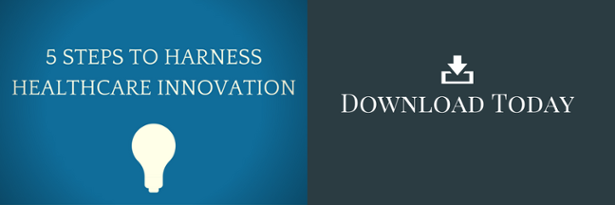CPOE: The Next Generation

 Blair Powell Senior McKesson Analyst | The HCI Group
Blair Powell Senior McKesson Analyst | The HCI Group
The elevator doors open and Dr. Jean-Luc Picard strolls off of the car and heads down the hallway of the 7th floor patient tower. He passes the nurse station and pauses just before reaching the first in a series of patient rooms.
“Computer. Rounding, please.” He states out loud, with no one within listening distance of his voice.
“Good morning, Dr. Picard.” A pleasant female voice responds through the PA system. “Rounding.” A series of blue LED lights activate above random patient doors in the hallway. Dr. Picard walks to the first door, knocks, and steps inside. The same pleasant computer voice announces his arrival. “Dr. Picard is here to see Patient Virginia Smith.” The woman in bed sits up and primps briefly.
“Good morning, doctor.” She smiles.
“Good morning, Ginny! How are you feeling today?” Dr. Picard walks to the foot of the bed. A screen highlights above the bed, as if hovering at Dr. Picard’s eye level. Ms. Smith can see Dr. Picard reviewing a holographic screen, but she can see nothing that he reviews from her perspective. Dr. Picard reads through nursing notes, waves a hand and the screen changes to lab results. “Hmm… your potassium is still a little higher than I’d like it to be… Computer. Repeat serum potassium at 11am today.”
“Confirmed, Dr. Picard.”
“Ginny, are you ready to go home?” He peers at his patient through the translucent holographic screen. Ms. Smith smiles and nods her head. “Computer, if potassium level is lower than 3.2, initiate my Standard Inpatient Discharge Instructions.”
“Confirmed, Dr. Picard.”
“Continue current medications upon discharge, except the Ambien.”
“Confirmed, Dr. Picard.”
“Make an appointment for one week from today in my office.”
“Confirmed Dr. Picard.”
“Ginny, you’ll get a text from my office, if the time they give won’t work, just call them back, okay?”
“Sure.”
“Do you have any questions for me?”
“Oh, no, I was hoping to go home yesterday before this stupid potassium level…”
“Right.” Dr. Picard nods his head in agreement. “Well, let’s hope that level is better today. “Computer. Ms. Smith should have a level 2 dietician consult today, as soon as possible for a discharge today.”
“Confirmed, Dr. Picard.”
“Take care, Ginny. I’ll see you next week.” Dr. Picard walks out of the room and pauses in the hallway.
“Computer. Visit complete.”
“Confirmed, Dr. Picard.” The blue LED goes off over the patient’s door. Dr. Picard turns and heads down the hall to the next patient room.
Wow. That’s what CPOE is all about, right? Attending physicians having all the information they need to make care decisions immediately, and they’re able to execute orders while talking to / examining their patients. Voice recognition, no logins or passwords to remember. Granted, we’re not quite there yet . . . okay, so we’re not even close to being there. Science Fiction has always been a little ahead of technological reality. The television show “Star Trek” first aired in September of 1966*, nearly three years before we landed on the Moon, but even those early episodes, and again in 1987 when “Star Trek: Next Generation” began to air, the writers imagined computing and technology in the most useful way imaginable, voice recognition and voice commands. No keyboard, no mouse, not even a touch screen. That’s technology in the fast lane. Why would a science fiction television show even be included in a discussion of CPOE? Well, ‘Star Trek’ is cool for one thing, and secondly, how better to illustrate just what expectations are when it comes to how technology can best serve us. To fully understand where we are with CPOE, we first must go back to its beginnings to understand its future, and all the implications of getting from, well, ‘there’ to, well, ‘there’.
It was 1971, when the El Camino Hospital in Mountain View, California worked with the nearby NASA space center and the Lockheed Corporation to develop and implement the world’s first computerized physician order entry system. I’d like to repeat that date, 1971 (that’s two years after the original “Star Trek” series was cancelled..). Since that time, the ‘p’ in CPOE has evolved, first into “prescriber”, and then “provider”, and the supporting devices, as in the ‘c’ in CPOE, have evolved dramatically, in terms of processing power, response time, storage capability, size, portability, and overall functionality. In 1999, the US Institute of Medicine (IoM) published a highly informative report, “To Err is Human” that highlighted an unexpectedly high error rate in medical care in the United States, and brought to the fore front the issue of patient safety and the need to eliminate medical error from US hospitals†. So, by the end of the 20th Century, we have the know-how, the technology, and for many health systems, both the desire and finances to make CPOE a reality. What’s the delay? Why isn’t every hospital, clinic, physician’s office, and ambulatory center running on a 100 percent automated system?
The best answer is that there is no single issue that has affected what would appear to be the major delay in the most obvious advance in medicine since concept of asking small children to sit still with a small glass bulb of Mercury in their mouths was deemed a bad idea. Is it the technology itself? Is it money? Institutional incentive? Is it limitations within the medical culture? Again, the answer is a combination of ‘all the above’.
In as much as voice recognition does exist, to introduce it to even the most basic applications is expensive, and still very time consuming to program the “human to machine” interfaces. Additionally, there’s added layer of complexity in either, a) finding a vendor that provides all the functionality acceptable to a healthcare system in all their applications that were developed at the same time, on the same platform that includes all the features the buyer wants, b) developing a single, all-knowing interface that can offer the end-user functionality in a consistent manner, but is actually communicating with multiple systems, on multiple platforms, developed by multiple vendors. (Remember why we have “HL7” standards?? Many would joke that the first six just didn’t work so well…)
Is money the issue? In 2009, the stimulus package included $26 billion for the “Medicare and Medicaid Electronic Health Records Incentive Program”, or more commonly called “Meaningful Use” (MU). The program uses the Electronic Health Record (EHR) to improve quality, safety, efficiency, and reduce health disparities, engage patients and family, improve care coordination, and population and public health, and maintain privacy and security of patient health information‡. MU compliance will result in: Better clinical outcomes, Improved population health outcomes, Increased transparency and efficiency, Empowered individuals, and more robust research data on health systems§. The stages of MU include: STAGE ONE: 2011-2012 Data Capture and sharing, STAGE TWO: 2014 Advance Clinical Processes, and STAGE THREE: 2016 Improved Outcomes**.
Since law schools have been in existence in the United States almost as long as medical schools, there has always been a compelling need to document patient care as thoroughly as possible in the healthcare setting. Beyond the need to protect an individual and an organization against litigation, documentation plays a significant role in optimizing patient care and patient outcomes. A healthcare system will greatly address these needs with the implementation of a full-featured electronic medical record (EMR), and providers using CPOE are the primary contributors to a patient’s electronic health record.
In many instances, a healthcare system has made the commitment, financially, logistically, institutionally, and several years later, they find themselves with less than 10 percent compliance of physician usage. Let’s address “the elephant in the room”, which is the generational perception that older physicians are less likely to embrace changes to the workflow they’ve used for, in some cases, decades. Anecdotally, there have been significant numbers of older physicians choosing to retire their practice instead of adopting new workflows that are heavily dependent on new technology. Also, many physicians are considering leaving practice and retiring early due to the Affordable Care Act (ACA), as identified in a 2013 study conducted by Deloitte††. In the study, 57 percent of physicians viewed changes in the industry due to the ACA a threat, and six in 10 of those physicians polled indicated that they plan to retire in the following 2-3 years. Since the physician is the lynchpin to any effective healthcare system, their participation, without exception, is crucial to the success of an EHR, their complete buy-in and participation is essential. All considerations in implementing an EMR/EHR must revolve around CPOE and the physician population. If any part of an EMR/EHR being implemented is not accepted by the physician component within a healthcare system, the overall implementation will fail.
So, 34 years after the first CPOE system was implemented in a California hospital, how well has computerized provider order entry progressed in usage and complexity? Eh . . . Apple released it’s watch in April 2015, which has been touted as being able to do everything short of cook breakfast on your wrist, so, in comparison, eh . . . the computing model displayed on “Star Trek: Next Generation”, now playing nightly on various cable channels as reruns would still be considered the brass ring of end user interfaces, and healthcare I.T. vendors are getting closer. Really, closer than ever before, but, we as I.T. professionals must remain realistic and patient in our expectations, and we must convey as much to the physician stakeholders we work with on a day to day basis, in an honest and professional manner, and their expectations must be realistically aligned to actual deliverables of the CPOE project. At the date of this writing, no vendor can offer functionality that approaches the computer on the U.S.S. Enterprise, but, stand by . . .
About the Author
Blair Powell Senior McKesson Analyst
Blair has over 25 years of experience with McKesson clinical applications from support to development as well as implementation and project management across the United States and Canada. Moving forward, He currently working on opportunities for providing McKesson support using HCI’s Sustain and Support model across the United States and Canada.
Sources
* IMDBpro.com
† International Journal of Medical Informatics, Volume 77, Issue 8, August 2008, Pages 546-554, Cunningham, Geller, and Clarke
‡ Source: CMS.gov (Centers for Medicare and Medicaid Services)
§ Source: CMS.gov (Centers for Medicare and Medicaid Services)
** Source: CMS.gov (Centers for Medicare and Medicaid Services)
†† Deloitte 2013 Survey of U.S. Physicians: Physicians perspectives about health care reform and the future of the medical profession

